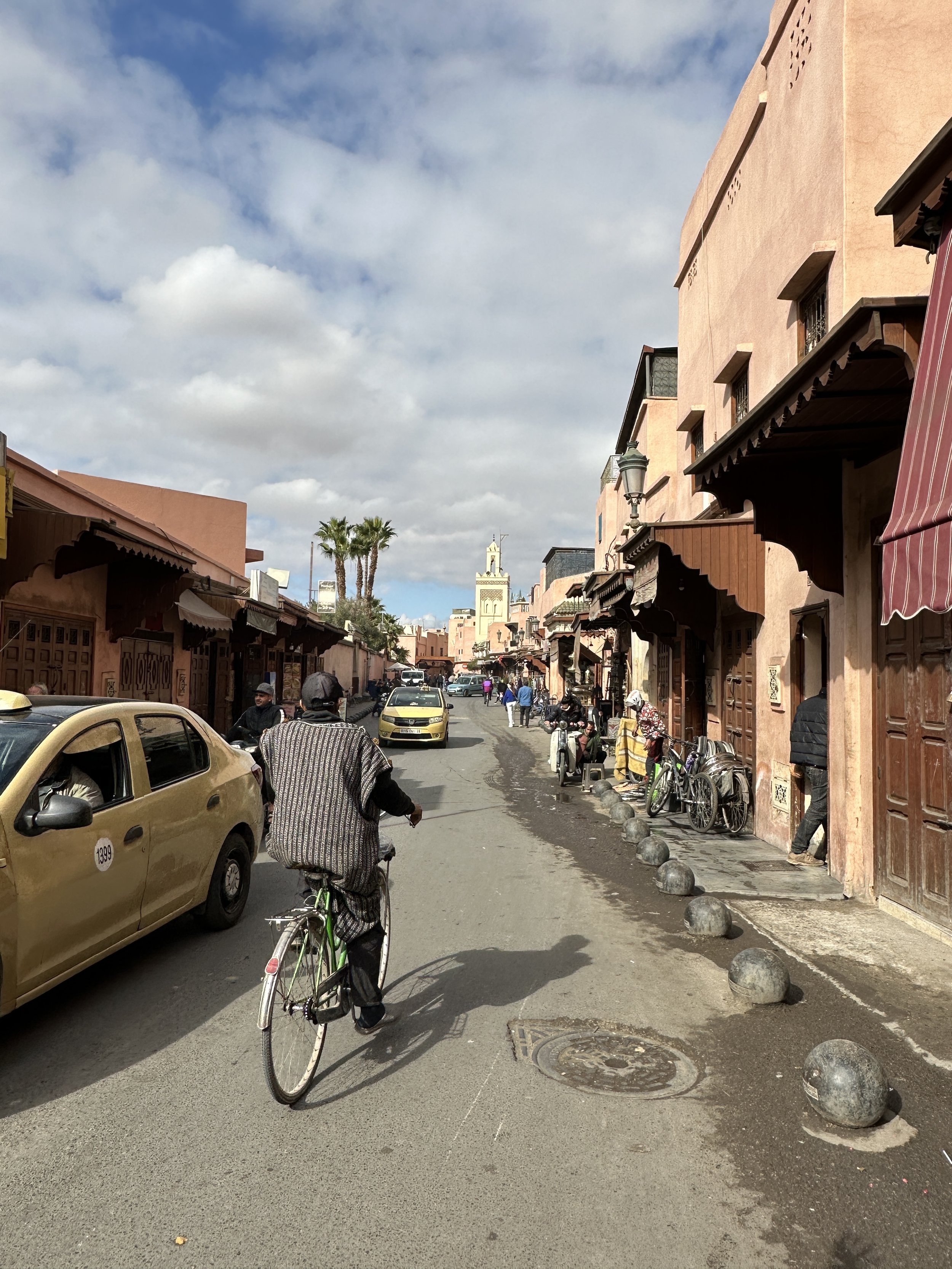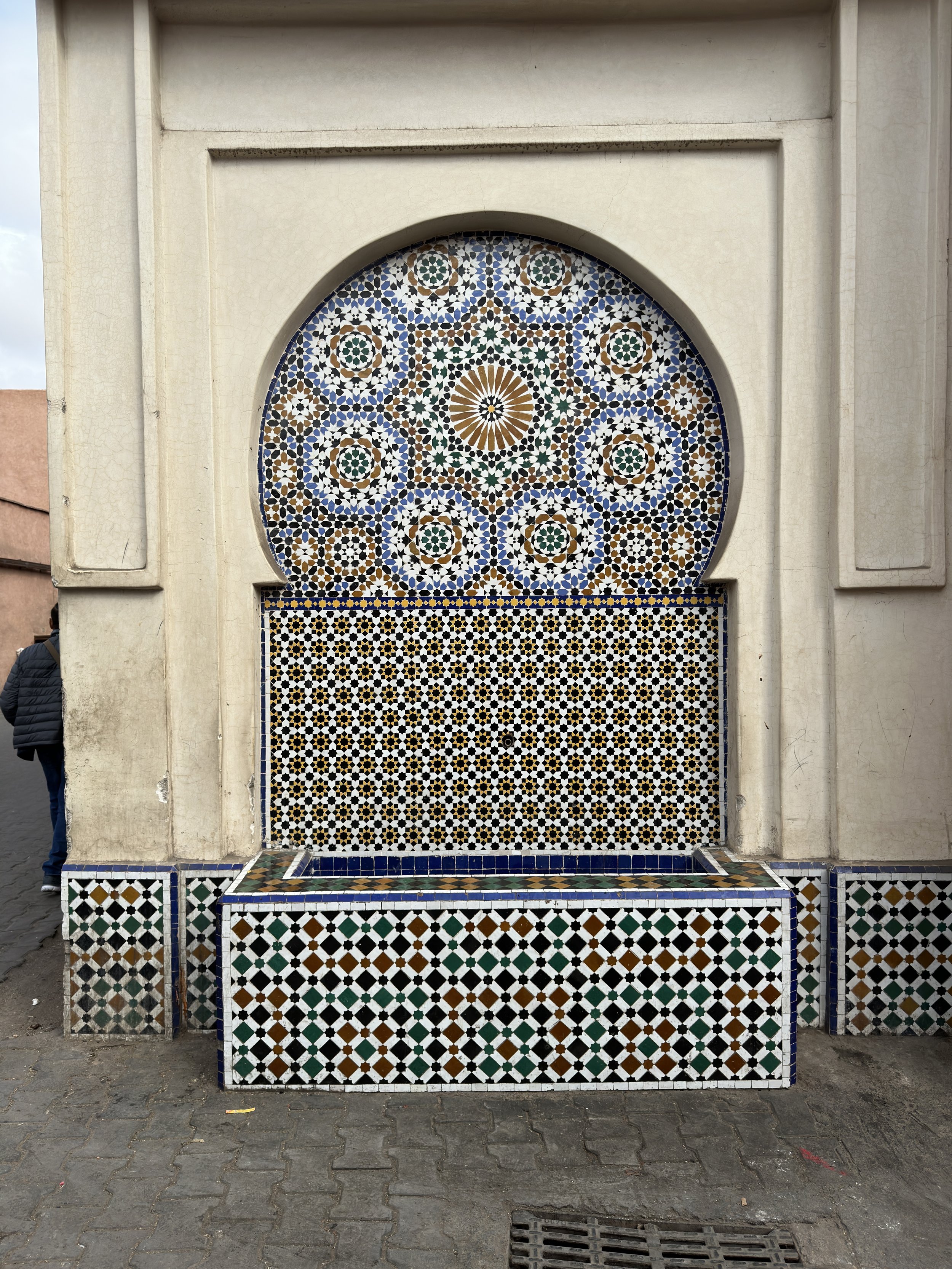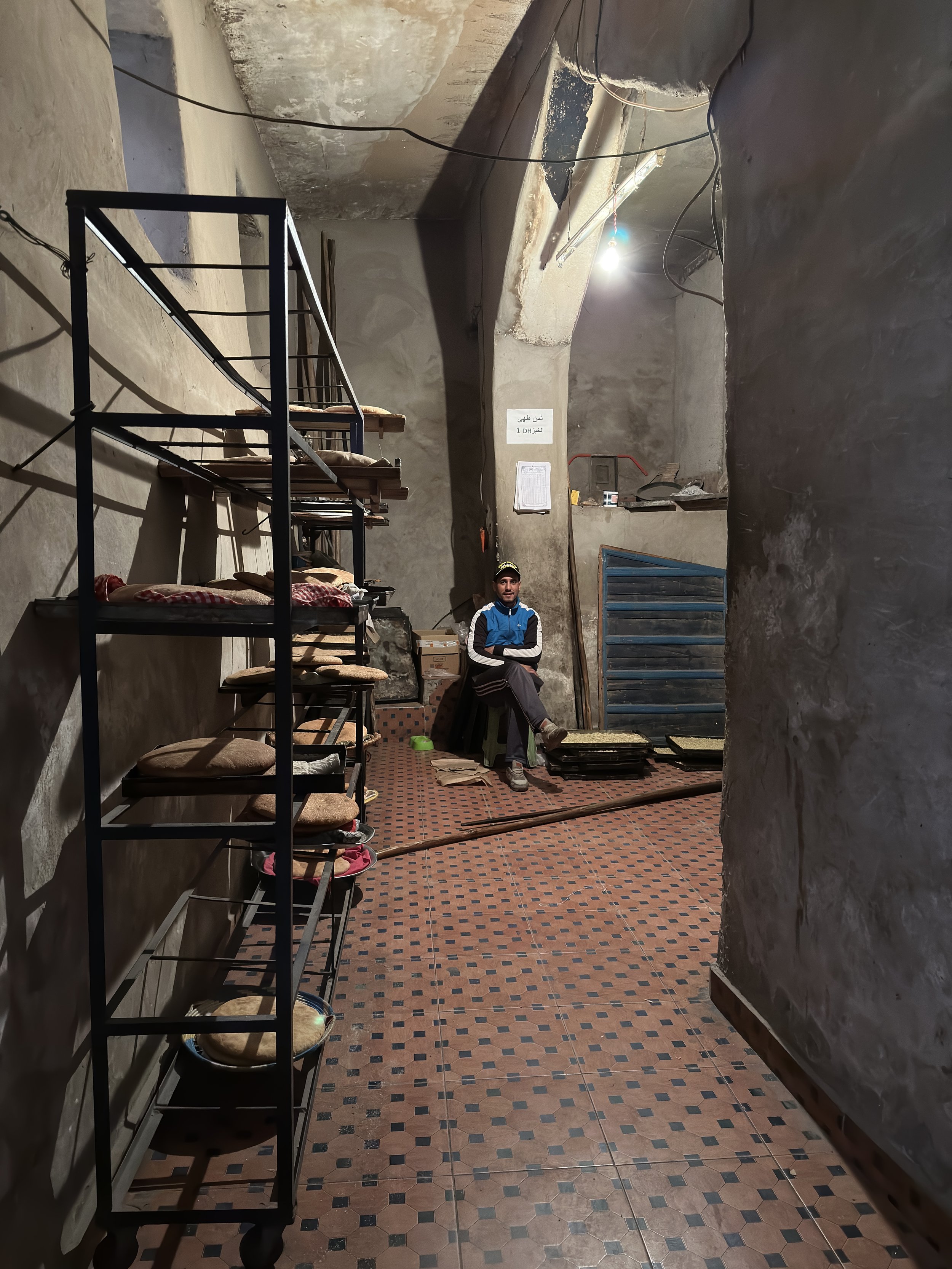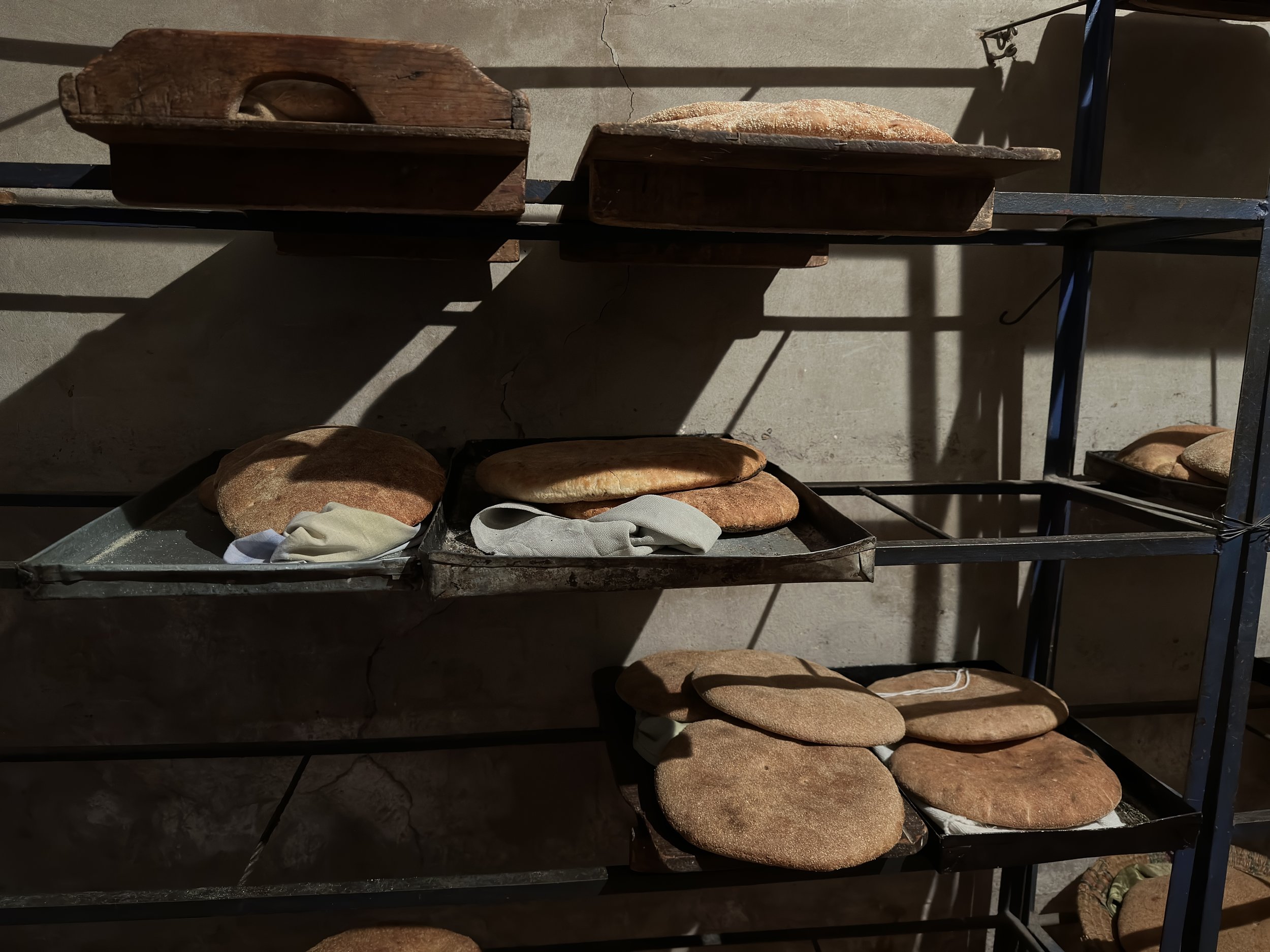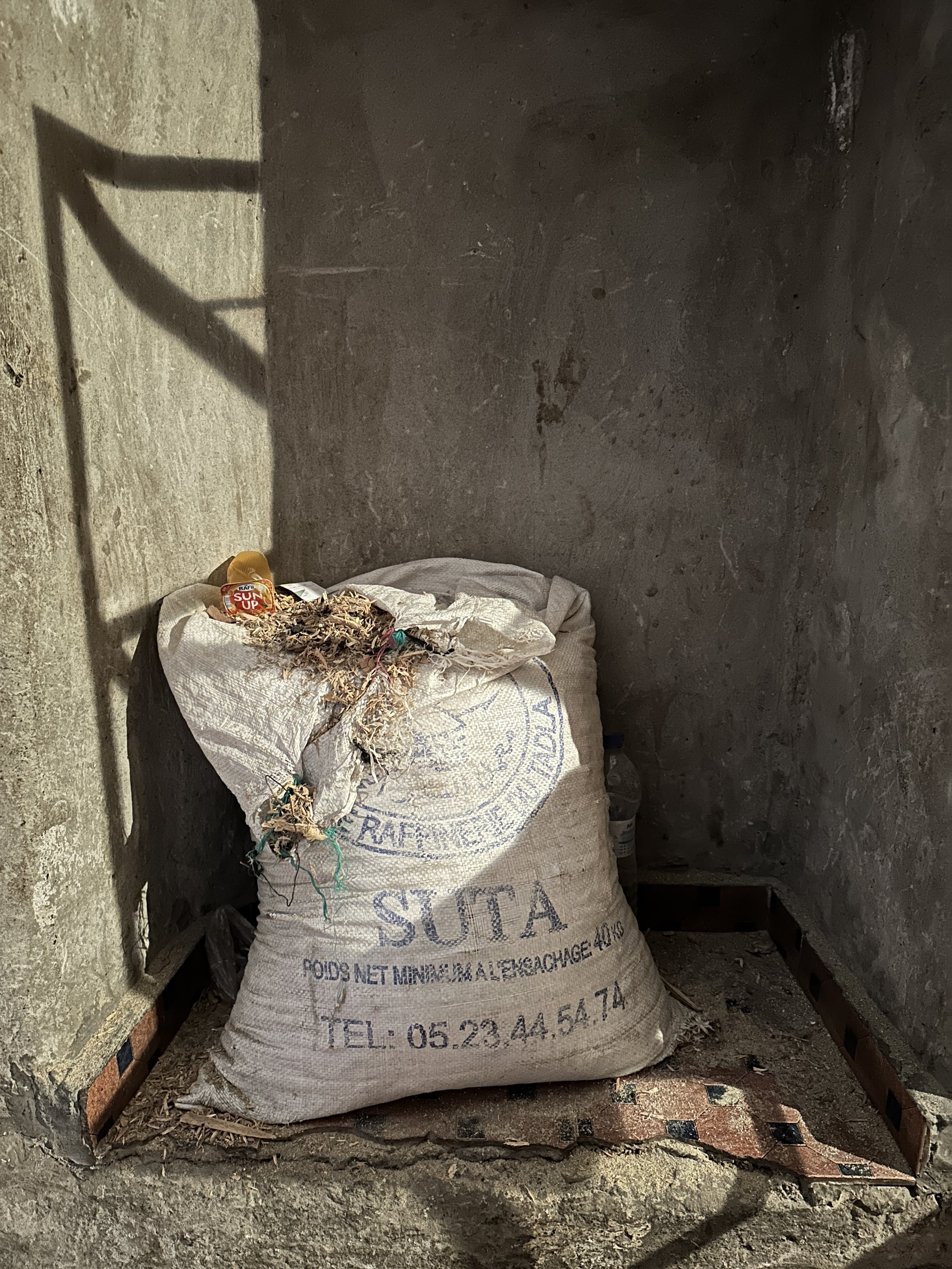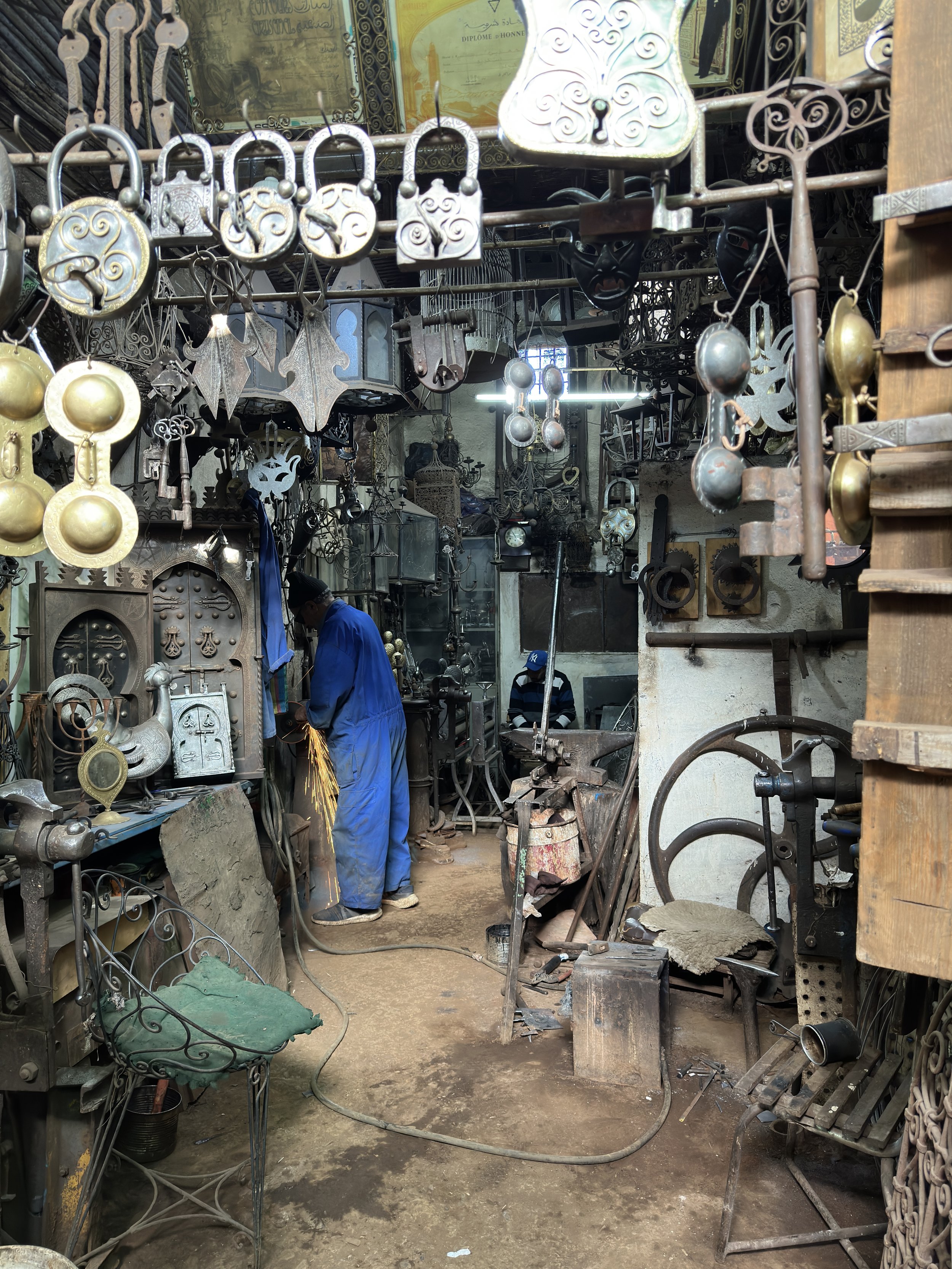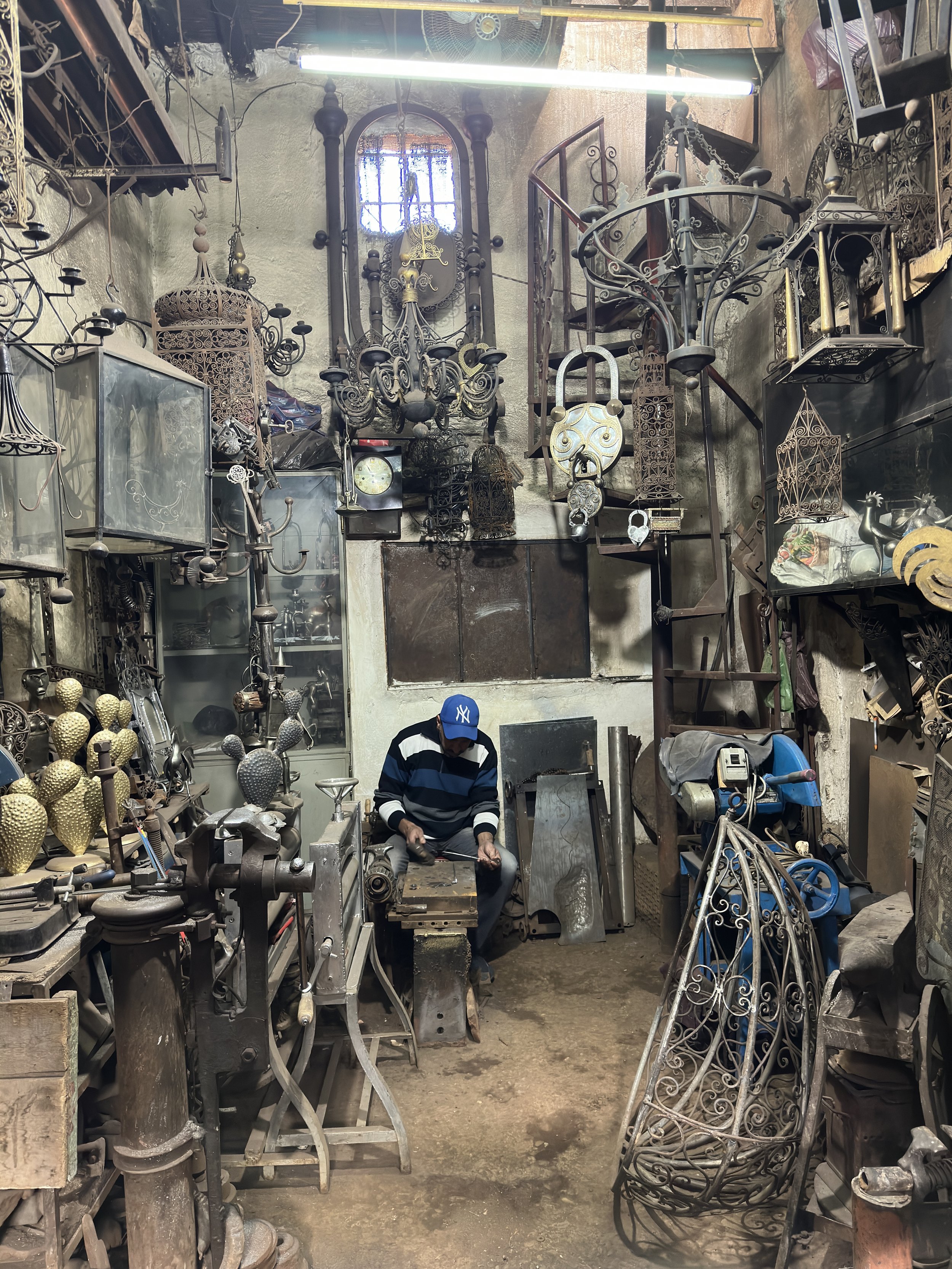Wednesday, January 18, 2023: Today, we hire a tour guide to take us around the Medina. Our host, Zakaria, made the arrangement, and he picked just the right person. Youssef meets us at the house, and tells us he would like to take is in the “every day” Marrakech, rather than the usual touristy areas. We are definitely up for that!
We start just near our AirBnB - just one street over, and we are already in the heart of the old Marrakech. Over the next several hours, we follow Youssef through several neighbourhood. The medina is surround by fortification walls and he explains that, prior to the French occupation, which lasted from 1912 to 1956, the city of Marrakech was mostly contained within these walls. The area contained within the walls is 700 hectares, or 7 square kilometres. The development of the city outside the walls was done by the French, during the protectorate.
Each neighbourhood must have five basic elements: a mosque, a hammam (public bathing house), a school, a bakery, and a market. Most of the people who still live in the medina have inherited their house from their family. As tourism increased, many foreigners purchased properties and transformed them in riads, a type of boutique hotel that you can now find in the most obscure corners of the medina. Property prices rose so much that locals are now unable to buy property there and have to move to the city’s outskirts.
Youssef tells us that, when he got married, his wife was happy enough to live with his family, in the medina, but when their first child was born, she insisted they move to their own place. They had to buy near the airport, as this is what they could afford. Youssef misses living here and his love of the place is evident as he walks confidently around obscure corners and greets and is greeted back by people he knows.
He takes us to see artisans of various trades. First, a traditional bakery. Here, the neighbourhood families bring bread and pastries that they make themselves to be baked in the traditional oven. See those coloured cloths under the bread? They remind the baker of which bread is whose. Two young girls come in and ask for their bread. One of them picks up one of the wooden boards on the shelves, with a few loaves of bread on it, pops the board on her head and, as they both chat about something or other, they turn through the door and disappear back into the alleyway. “You see, this is always done by the children or the young ones,” Youssef explains. A man is standing in a dug out space, by the oven door. “Can you imagine how hot it gets here, in summer, when it is 40 degrees outside?” This way of life is disappearing slowly, he tells us, as many younger women are not interested to do this work any more.
Next he takes us through the section of the market where the blacksmiths work. In these few alleys, all we see is metal workers. They make lamps, gates, trays, keys, door knockers, everything and anything that can be made of metal - all made by hand - in the most basic of shops. He stops at one shop and explains that the skill is always past from father to sons. He points out how the father is the one who is in front of the shop, while the son sits at the back - a mark of respect. “Always, the father in front, the son in the back.”
Then, we go through the tanner section: bags, purses, shoes, babouches (the traditional Moroccan slippers)… And at a shop where plaster tiles are carved, one by one. You will see some of that beautiful detail in my next post, when I show you the Ben Youssef School Muséum. Although it was part of our visit today, there is too much to show you and tell you… it will have to be a whole separate post.
We walked through so many neighbourhood, and we finally ended up in the Jamaa el Fna Square. It was after 6 o’clock by then, and the square was hopping with people everywhere, an entire section for street food, musicians, entertainers, street sellers… We will be coming back here to appreciate it better when we are not so tired. For now, we say good bye to Youssef and head out to a restaurant he recommended for dinner.
One thing you notice and soon become accustomed to is the regular calls to prayer that come five times a day. Here, listen to the second last call of the day, that came as we ended the day with dinner on a terrace at … on the Jamaa el Fna Square.
The call to prayer comes five times a day. Listen to it here, over the Jamaa el Fna Square in Marrakech.
There is so much more to tell you… but for now, I have to go. The Medina is calling me to make more photographs!


